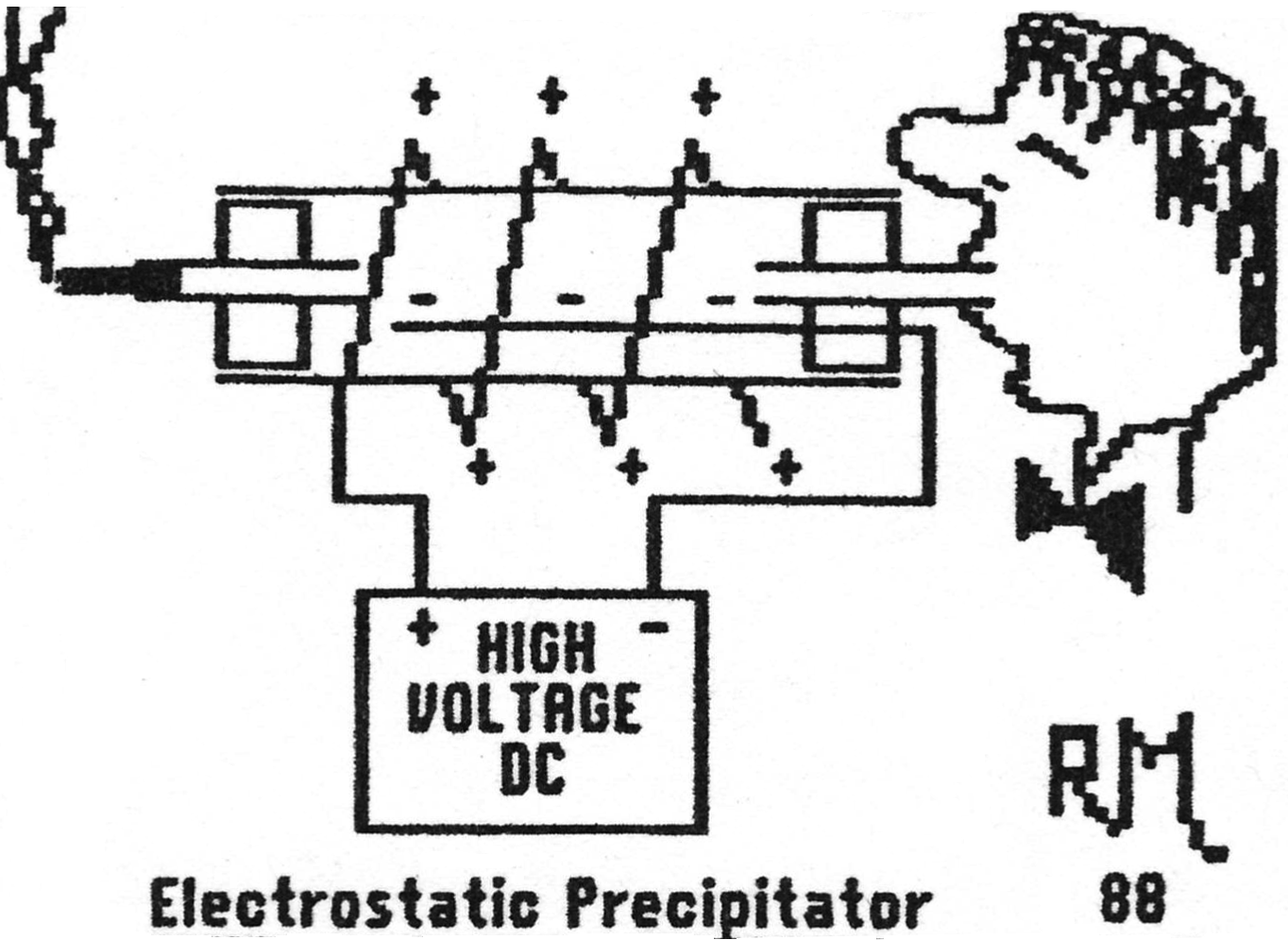September 01, 1988 Filed in:
Demo CornerRoland Meisel, Ridgeway-Crystal Beach High School
�Introduction
An electrostatic precipitator can be assembled in less than half an hour using parts commonly found around the science department in a high school. I have used it as a demonstration in classes ranging from grade 10 general science to grade 13 physics. In addition, it has spawned several senior science projects using it as an investigative tool.
The precipitator uses a strong electrical field to remove particles from air. I use it to “condense” cigarette smoke.
Construction
I used a glass tube about 4 cm in diameter and about 30 cm long. If you can’t find one, cut the bottom off a graduated cylinder of suitable size and use that.
Each end of the tube was fitted with a one-hole rubber stopper. I inserted a short glass tube into each stopper, and added a piece of rubber hose to one end sufficient to hold a cigarette. I also used a length of rubber hose on the “student” end to keep my “volunteer” a safe distance from the high voltage wires.
I used stiff single-conductor wire, about #16 gauge or thicker, to connect the high voltage. One wire went through the hole in one stopper, and stayed inside the glass tube. The other wire was wrapped around the outside of the tube. I used about ten turns. Note that the wires are NOT connected to each other. The inner wire ends inside the tube, while the outer wire ends outside the tube.
The power supply can be any DC, or quasi-DC, high voltage source. I use an old induction coil from CENCO. The higher the voltage, the stronger the effect. However, too high a voltage can cause arcing.
 Operation
Operation
I solicit both a cigarette and a volunteer from the class. The cigarette is lit, and the volunteer puffs until the glass tube is full of smoke. The high voltage is turned on, and the smoke “disappears”. I usually leave the voltage on, and encourage the volunteer to puff away. The tube receives a noticeable deposit of brown tar on both the glass and the wire in the centre.
This usually generates some discussion, and provides an excellent opportunity to develop some of the curriculum emphases that are mandated in Part I of the new Science Guidelines. I usually work in a little chemistry as to some of the compounds to be found in cigarette smoke, and also a little biology as to the effects of smoke on those who breathe it in.
Notes
Since you are working with a high voltage source, care must be taken to keep students (and yourself!) away from possible shocks.
When I first came upon this demonstration a number of years ago, I had no trouble finding a volunteer to smoke the cigarette for me. However, in the past couple of years, there have been several occasions on which no one in the class would admit to using tobacco. In order to complete the demonstration, I was forced to do it myself. A way around this is to use an inexpensive air pump, like the kind used to inflate air mattresses.
Column Editor: Ernie McFarland, Physics Department, University of Guelph, Guelph, Ontario, N1G 2W1 Tags: Electricity


